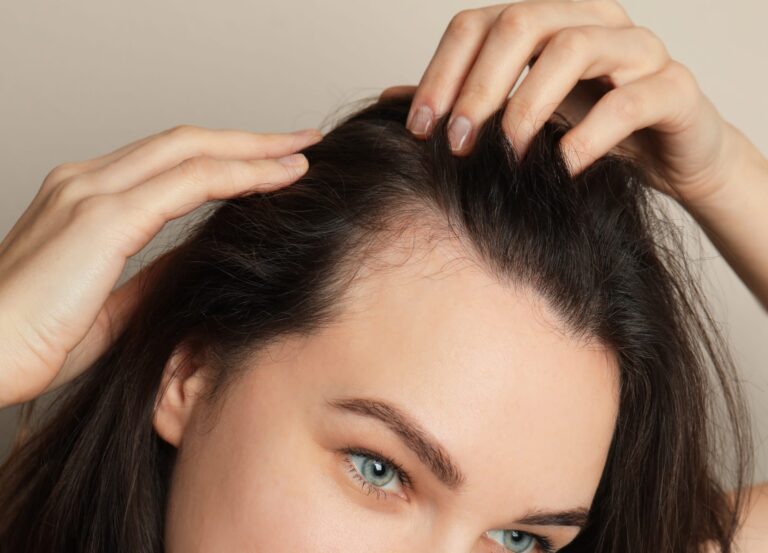Hair removal of any sort—waxing, shaving, tweezing, lasering—has always been a deeply private act for me. I realize it’s completely normal for people to go to salons, remove their pants, and spread their legs so a stranger can rip or zap the hair from their perineum, but I… just can’t. I like to think that giving yourself an at-home Brazilian builds character in the same way putting together a piece of furniture does—it’s frustrating at times and always takes longer than you allotted for, but provides a nice distraction from whatever else is going on in your life and leaves you with a sense of accomplishment and pride when it’s finished.
But with shelter-in-place orders in effect for who knows how long, I’m skipping waxing and reconnecting with my LumaRx Full Body IPL Skin Beauty System ($449) instead. A few years ago, I used the hair removal device as directed for three months and saw impressive results on my legs, arms, and bikini line that lasted nearly an entire year. (It’s worth noting that while at-home devices are lower strength than in-office lasers, neither is truly permanent. Most people need annual touch-ups to maintain results.) I completely slacked on maintenance and am vowing to stay committed this time.
If you’re lamenting the fact that salons, medical spas, and doctors’ offices aren’t currently open for your hair removal needs—or you just need a hobby—I asked two experts everything you need to know before investing in, and operating, an at-home device.
Does at-home laser hair removal work?
“I think [at-home devices] can be effective for the right individual,” says Dr. Nikhil Dhringra, a board-certified dermatologist in New York City. “Laser hair removal is essentially dependent on pigment in the hair and, in a sense, a contrast between the pigment of the hair and lack of pigment in the skin. For the fairest skin types, particularly those with darker hair to remove, it can be effective. For others, it is far less likely to be.”
He adds that not only are at-home devices “relatively underpowered compared to the in-office options,” but they tend to use intense pulse light, which is less concentrated than laser light. “IPL is definitely not safe for anyone with pigment in their skin,” Dr. Dhringa stresses. His biggest warning is that people who are “melanin-blessed” or have any hint of a tan stay away from at-home devices, “even if the brand claims safety for skin of color.”
Josie Holes, an esthetician at NYC’s SKINNEY Medspa, says that at-home laser gadgets just can’t compete with in-office devices. Not only is the energy output too low, they can’t treat skin tones darker than olive (whereas licensed professionals can treat all skin tones, she says) or detect blonde, red, or gray hair. “The only reason these at-home tools would be beneficial or efficient in any way is for treating a very small area, such as the lips or underarms, or treating an area for maintenance that has already been treated in the office.”
Is at-home laser hair removal safe? What are the biggest risks of at-home laser or light devices?
The top risk, according to the pros, is hyperpigmentation and skin damage from using a device not suitable for your skin tone or hair color. Though at-home tools generally provide basic guidelines, it’s best to consult with your dermatologist or a laser hair removal specialist before you invest. “Some of these gadgets are smart enough and will actually block the laser from firing if the skin or hair color is not ideal,” says Holes, “but if you are unsure, the Remington iLIGHT Pro Plus Quartz [$400] will do it for you.”
Beyond that, Holes believes “at-home laser devices are overall very safe. The FDA would not allow companies to manufacture and sell these devices to the general public if they could cause any serious harm.” However, it’s important to be aware of the contraindications for treatment—for instance, pregnant and breastfeeding women are not candidates—so she recommends doing thorough research first.
You’ll also want to avoid retinoids, antibiotics, tanning lotions, and sun exposure before and after treatment for at least two weeks, and to not wax or tweeze hairs from the treatment area. “That removes the hair directly from the follicle, when it is the hair in the follicle that is targeted by the light in the lasers,” she explains. (Shaving, on the other hand, is necessary prior to treatment.) Over-treating an area is also a concern, says Holes, so be sure to carefully read the instruction manual before use, since the amount of passes can vary between tools.
Related: Your Guide to Safe and Effective Hair Removal Lasers for Fair, Medium, and Deep Skin Tones
Do you need to wear protective eyewear at home?
Many laser hair removal tools don’t come included with protective glasses, but Dr. Dhringa says “eye protection is a must,” since there are “structures in your eyes that can be affected by the wavelength of light and laser emitted by these devices.” You can find plenty of options on Amazon.
In addition to protecting your eyes, Holes says you should make sure not to fire your device around mirrors: “The type of light that is utilized in laser technologies will reflect off mirrors and scatter its energy.”
Which areas should you not treat at home?
Both Dr. Dhringa and Holes agree: leave lasering the genitals to the pros. “This is a very sensitive area that can easily be burned if not treated with the right settings,” cautions Holes. She recommends sticking to small areas, such as the upper lip, underarms, toes, or just the bikini line.
If you decide to treat larger areas, Dr. Dhringa says that “to properly use these devices to remove hair, you need firm contact with the skin, so tricky-to-reach areas like the back might be difficult to do unless a buddy can help.”
How often can you do at home laser hair removal treatment?
If you’re getting laser hair removal done in a doctor’s office or medical spa, sessions are spaced four to six weeks apart. “There are four stages to hair growth—anagen, catagen, telogen, and exogen—and they cycle throughout a four to six week period,” explains Holes. Anagen is the ideal time for treatment. “The hair is still attached to the papilia, located at the base of the hair follicle, but is visible above the skin. It’s noticeable when you’re in this stage; you can clearly see the hairs above the epidermis,” says Holes. (But don’t forget to shave: “Stubble will cause the treatment to be less effective, as some of the energy being emitted is wasted on the external hair.”)
Most at-home devices, however, recommend treating the desired area every two weeks. According to Tria’s website, “Hair grows in cycles, so not every hair can be treated at the same time. After your second treatment, 70% less hair grows back, and you’re already on your way to permanent results. However to treat the remaining hairs, the laser needs to reach each hair follicle during its growth cycle. For permanent results, treat the area once every two weeks for at least three months until all hairs have been treated, and the hair stops growing back.”
Related: 8 At-Home Devices That Actually Make a Difference in Your Skin and Hair, According to Doctors
When can you expect to start seeing results?
It varies and is dependent on skin tone and hair color, but Holes says “most at-home laser hair removal devices claim that you can see full results within 8-10 treatments.” In the office, fair skin tones can typically see results after two or three sessions, whereas Dr. Dhringa says it can often take six to eight for dark skin tones to get satisfying results.
What can you do to make the treatment less painful?
Dr. Dhringa recommends taking a mild anti-inflammatory, like ibuprofen, one hour prior to treatment, then icing the area after. And remember, says Holes, “Your treatment does not have to be painful in order to see hair reduction. If you do find that higher settings are more painful, you can keep your device at a medium or lower setting. This will just prolong the time it takes to see results.”











